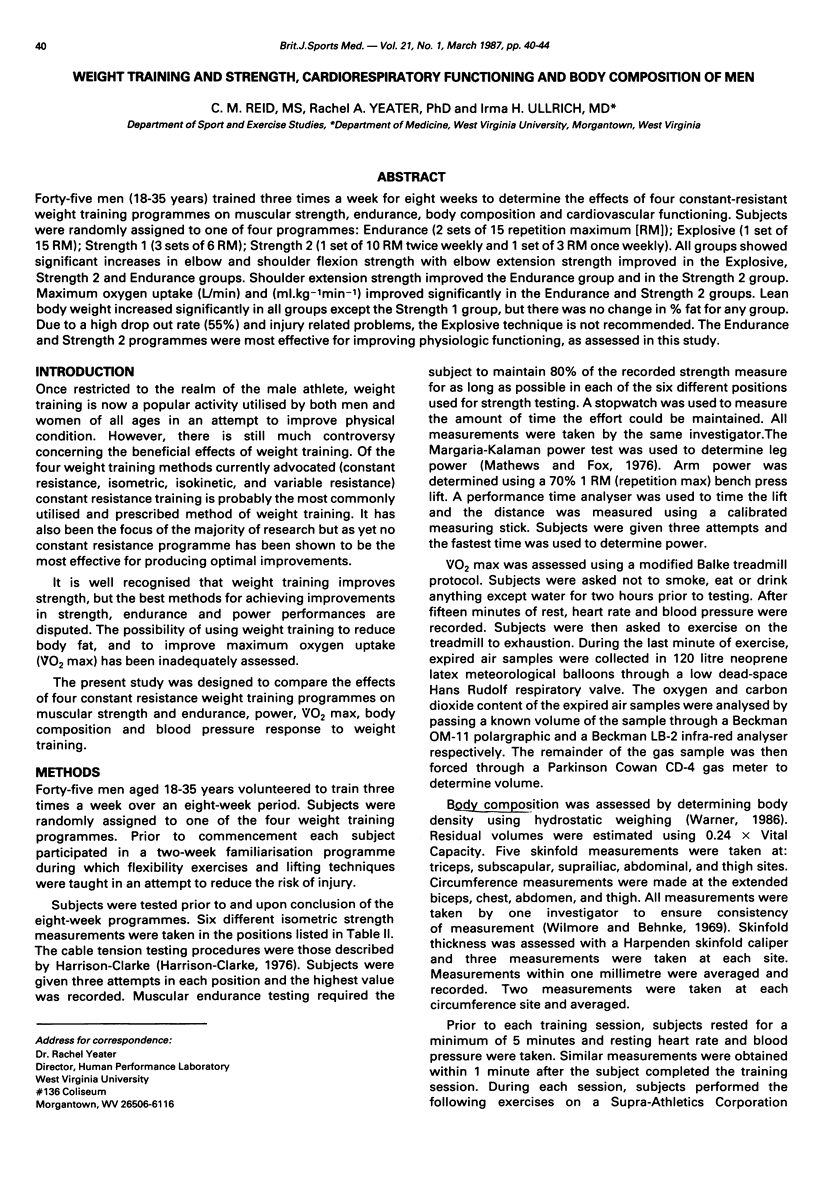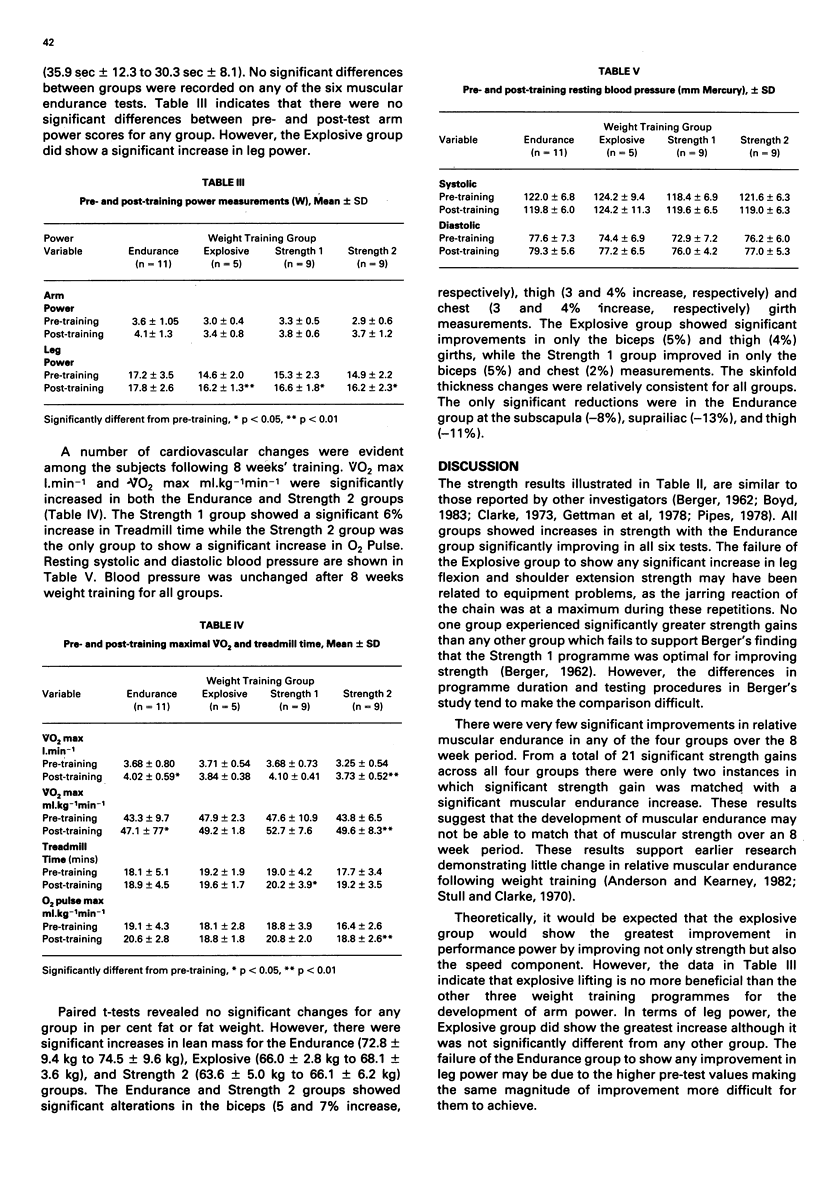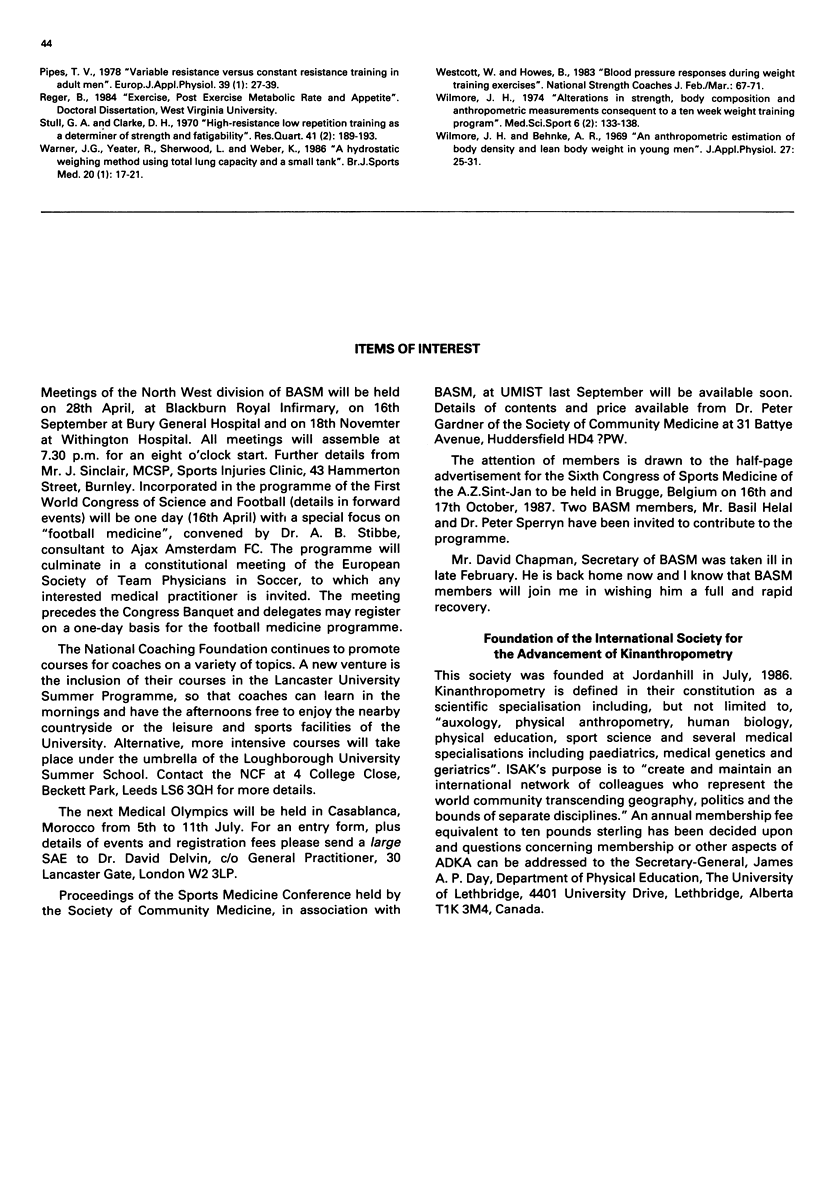Abstract
Forty-five men (18-35 years) trained three times a week for eight weeks to determine the effects of four constant-resistant weight training programmes on muscular strength, endurance, body composition and cardiovascular functioning. Subjects were randomly assigned to one of four programmes: Endurance (2 sets of 15 repetition maximum [RM]); Explosive (1 set of 15 RM); Strength 1 (3 sets of 6 RM); Strength 2 (1 set of 10 RM twice weekly and 1 set of 3 RM once weekly). All groups showed significant increases in elbow and shoulder flexion strength with elbow extension strength improved in the Explosive, Strength 2 and Endurance groups. Shoulder extension strength improved the Endurance group and in the Strength 2 group. Maximum oxygen uptake (L/min) and (ml X kg-1 min-1) improved significantly in the Endurance and Strength 2 groups. Lean body weight increased significantly in all groups except the Strength 1 group, but there was no change in % fat for any group. Due to a high drop out rate (55%) and injury related problems, the Explosive technique is not recommended. The Endurance and Strength 2 programmes were most effective for improving physiologic functioning, as assessed in this study.
Full text
PDF




Selected References
These references are in PubMed. This may not be the complete list of references from this article.
- Gettman L. R., Ayres J. J., Pollock M. L., Jackson A. The effect of circuit weight training on strength, cardiorespiratory function, and body composition of adult men. Med Sci Sports. 1978 Fall;10(3):171–176. [PubMed] [Google Scholar]
- Stull G. A., Clarke D. H. High-resistance, low-repetition training as a determiner of strength and fatigability. Res Q. 1970 May;41(2):189–193. [PubMed] [Google Scholar]
- Warner J. G., Jr, Yeater R., Sherwood L., Weber K. A hydrostatic weighing method using total lung capacity and a small tank. Br J Sports Med. 1986 Mar;20(1):17–21. doi: 10.1136/bjsm.20.1.17. [DOI] [PMC free article] [PubMed] [Google Scholar]
- Wilmore J. H. Alterations in strength, body composition and anthropometric measurements consequent to a 10-week weight training program. Med Sci Sports. 1974 Summer;6(2):133–138. [PubMed] [Google Scholar]
- Wilmore J. H., Behnke A. R. An anthropometric estimation of body density and lean body weight in young men. J Appl Physiol. 1969 Jul;27(1):25–31. doi: 10.1152/jappl.1969.27.1.25. [DOI] [PubMed] [Google Scholar]


